Filipino musicians create unique instruments from recycled materials. The Pas-ing, a notable example, combines cans, rubber bands, and matchsticks to produce an innovative sound. Artist Noi Narciso uses scrap materials to craft instruments, demonstrating the art form's creative possibilities.
These instruments serve both functional and aesthetic purposes. They are not only playable but also visually appealing, making them sustainable works of art. Workshops focused on environmental awareness and cultural preservation teach techniques for upcycling materials into instruments.
The art of upcycling has a rich history in the Philippines. This tradition continues to evolve, with a promising future for innovative instrument-making. The unique sounds produced by these instruments reflect their origins and contribute to the country's vibrant cultural heritage.
Upcycled Instruments: A Showcase
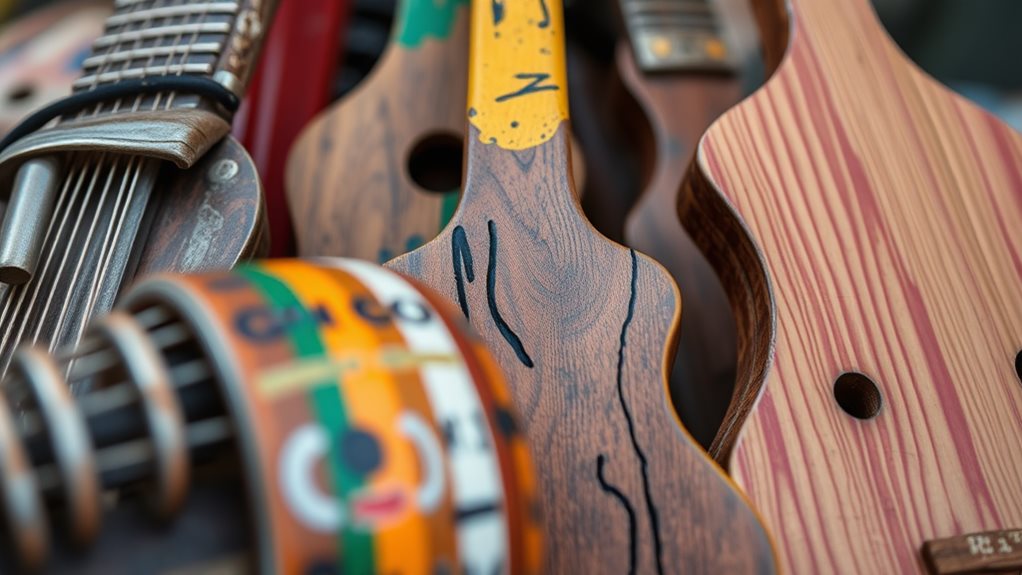
Upcycled instruments are a form of musical creativity that transforms discarded objects into unique and functional works of art.
The use of recycled materials in instrument design is exemplified by Davao artist Noi Narciso, who fashions instruments from scrap materials. His innovative instrument designs, such as the Pas-ing instrument, demonstrate that resourcefulness needn't compromise artistry. The Pas-ing instrument, for example, is made from empty cans, rubber bands, and matchsticks.
Transforming discarded objects into musical instruments isn't just about recycling, but also about pushing the boundaries of instrument design.
By reusing materials, artists breathe new life into them, imbuing them with sound and story. This eco-friendly approach encourages people to rethink waste and transform it into something beautiful and functional. For instance, a discarded object like an empty can can be transformed into a resonant tool.
The process of creating upcycled instruments is a journey of sound exploration and personal reflection.
Through upcycled creativity, individuals can discover new ways to express themselves by experimenting with unusual materials and sounds. Workshops and exhibits, like Narciso's "Ugong Sa Tig-ani," showcase the potential of this movement and demonstrate its educational value and community impact.
These platforms also provide opportunities for people to learn how to build their own instruments, fostering a deeper appreciation for art and sustainability.
Key initiatives are making upcycled instrument design more accessible.
Online tutorials, for example, have democratized access to this unique form of instrument design. By joining this movement, individuals can help transform waste into music.
Bamboo's Musical Legacy
Bamboo's Role in Filipino Musical Heritage****
Bamboo has been an integral part of the Philippines' musical heritage for centuries. The unique acoustics of bamboo make it an ideal material for creating a wide range of instruments, each with its distinct voice and contribution to the country's rich musical tapestry.
Unique Bamboo Instruments
The versatility of bamboo lends itself to the creation of various instruments, such as:
- Kubing: a small, handheld instrument that produces delicate sounds when plucked.
- Sloli: an instrument that produces vibrant melodies.
- Onuk: a set of instruments that create lilting notes when played together.
- Klin-tang sokong: a set of instruments that produce rhythmic sounds, often played during community celebrations.
Cultural Significance and Sustainability****
The use of bamboo in musical instruments goes beyond functionality; it's a testament to sustainable practices and cultural identity. Bamboo is a renewable resource, making it an eco-friendly choice for instrument crafting.
The instruments themselves become a reflection of traditional knowledge and artistry, preserving melodies and supporting local artisans.
Preserving Traditional Knowledge and Musical Heritage
The crafting of bamboo instruments supports local artisans, ensuring the continuation of traditional knowledge and the preservation of the Philippines' rich musical heritage.
Indigenous Filipino Instruments
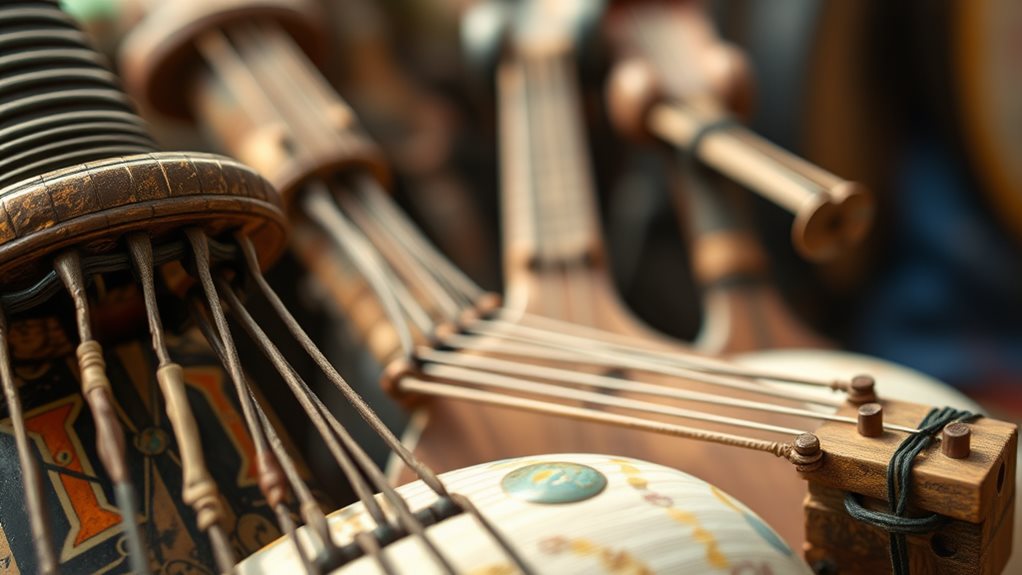
The Philippines is home to a diverse array of indigenous musical instruments, each with its unique sound and cultural significance.
In the realm of drums, the Tambuli ensemble from Mindanao is vital in rituals, while the Dabakan is a goblet drum favored by the Maranao. Conical drums, such as the Ifugao's Libbit and the Ibaloi's Sulibao, add to the traditional soundscapes. War drums like the Gambal, used by Visayan lumads, speak of a rich history.
Indigenous craftsmanship shines through in stringed instruments. A notable example is the Kudyapi, a two-stringed lute from Mindanao carved from a single piece of wood. Other examples include the T'boli's Hegalong, a boat-shaped lute, the Aeta's Litguit, a three-stringed bamboo violin, the Butting, a single-stringed bow, and the B'laan's Faglong, a two-stringed lute.
The Philippines is also known for its unique wind instruments. The mournful Tongali nose flute and the Palendag lip-valley flute of the Kalinga showcase the ingenuity of indigenous craftsmanship. Other notable examples include the Tumpong and Tulali flutes, along with the Negrito's Bansik.
Gongs and idiophones are equally impressive. The Kulintang, a set of tuned gongs, creates powerful sounds. The Gandingan, a set of large gongs, the Agung, Babandil, and the Gabbang bamboo xylophone round out this diverse collection of instruments, born from indigenous craftsmanship and contributing to the Philippines' vibrant traditional soundscapes.
Community and Cultural Uses
Filipino communities deeply integrate traditional instruments into their cultural practices**. These instruments are often featured in community celebrations such as weddings and conflict resolutions, where their melodies enhance the events. They symbolize cultural identity**, passed down through generations, showcasing Filipino craftsmanship.
Traditional instruments are made from recycled materials, reflecting environmental consciousness and sustainability. For instance, the bamboo kubing is a traditional instrument that reinforces cultural identity. Its construction and use echo generations of Filipino artistry.
Community celebrations and festivals showcase the significance of these instruments. In festivals like the Halabon, musicians gather to celebrate their shared heritage. Learning to make and play these instruments is vital for cultural transmission and preserving traditions.
Local artisans and musicians play a crucial role in preserving cultural heritage. They readily share their knowledge with younger generations, ensuring these traditions continue. This knowledge sharing fosters community spirit and preserves cultural identity.
Participating in musical traditions supports the preservation of Filipino heritage. By supporting local artisans and participating in these traditions, individuals contribute to the preservation of Filipino cultural identity.
Recycled Materials in Action
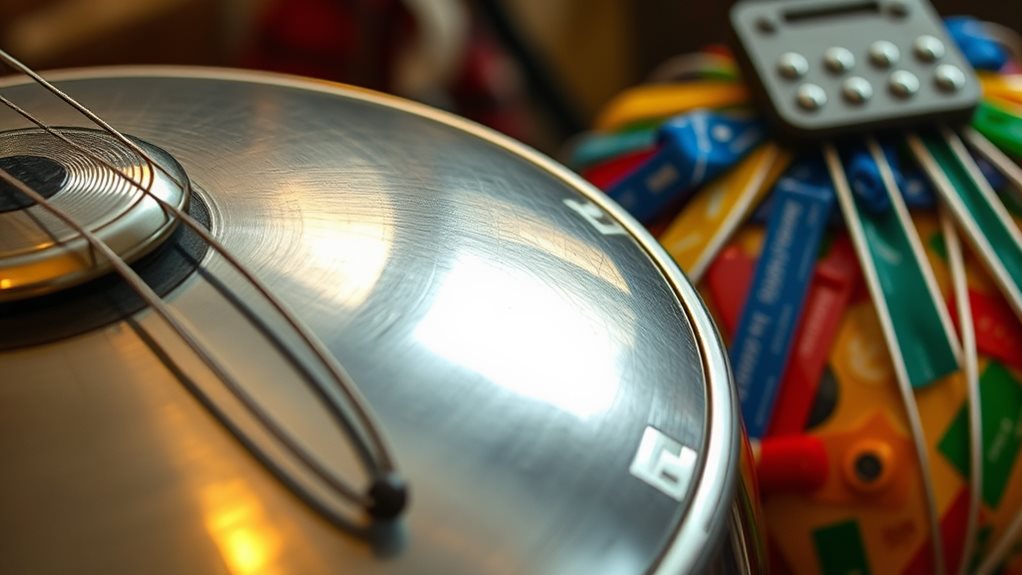
Resourceful artisans can transform discarded materials into unique instruments. This approach proves that sustainability and artistry can coexist. Artists like Noi Narciso craft instruments from scrap materials, showcasing sustainable sound in exhibitions like 'Ugong Sa Tig-ani'.
The construction of instruments like the Pas-ing demonstrates recycled creativity in action. The body of the Pas-ing is formed by empty cans covered in brown construction paper. Rubber bands serve as strings, positioned using matchsticks for optimal sound production. Uniform colors and added decorations enhance the aesthetic appeal, showcasing ingenuity.
Using recycled materials promotes a sustainable sound, which is environmentally responsible and economically viable. By using discarded materials, you directly contribute to a reduction in waste. Supporting local artisans and sustainable development through patronage also has a positive impact.
The educational value of recycled creativity extends beyond the artistic. Making music with recycled materials teaches you and others about recycling and upcycling****. This process incorporates personal memories and experiences into creations, making it a reflective and engaging activity.
Bamboo and Traditional Crafts
Bamboo's Role in Filipino Traditional Crafts and Music
Bamboo plays a significant role in Filipino traditional crafts and music, particularly in instrument making. This versatile material is central to crafting various instruments, showcasing the ingenuity of Filipino artisans. The use of bamboo reflects a rich cultural heritage that has been passed down through generations.
Preserving Cultural Heritage Through Bamboo Weaving Techniques****
The intricate designs and patterns found in bamboo instruments represent the mastery of bamboo weaving techniques.
These skills are honed over years and passed down through families, preserving a tradition that's both artistic and sustainable.
The process involves weaving and shaping bamboo into various forms, which requires great skill and practice.
Examples of Bamboo Instruments and Their Significance
* The kubing is a bamboo instrument that's shaped through rhythmic tapping.
This process requires practiced ease and skill, highlighting the artisan's expertise.
* The intricate weaving found in bamboo instruments creates patterns that tell stories of generations.
These patterns aren't just aesthetically pleasing; they represent the artisan's mastery of bamboo weaving techniques.
The Importance of Preserving Traditional Bamboo Crafts
The craftsmanship involved in creating bamboo instruments isn't just about creating a musical instrument;
it's about preserving a culture.
The enduring legacy of bamboo artisans' skills is evident in the intricate details passed down through generations and demonstrated in each piece they create.
By supporting these time-honored traditions, individuals support sustainable development and the preservation of invaluable cultural heritage.
Bamboo Instruments: A Living Connection to the Past****
Bamboo instruments represent a living connection to the past,
bridging traditional methods with modern creativity.
These instruments aren't just musical;
they demonstrate a commitment to sustainability and artistic expression.
The Kutiyapi and Other Instruments
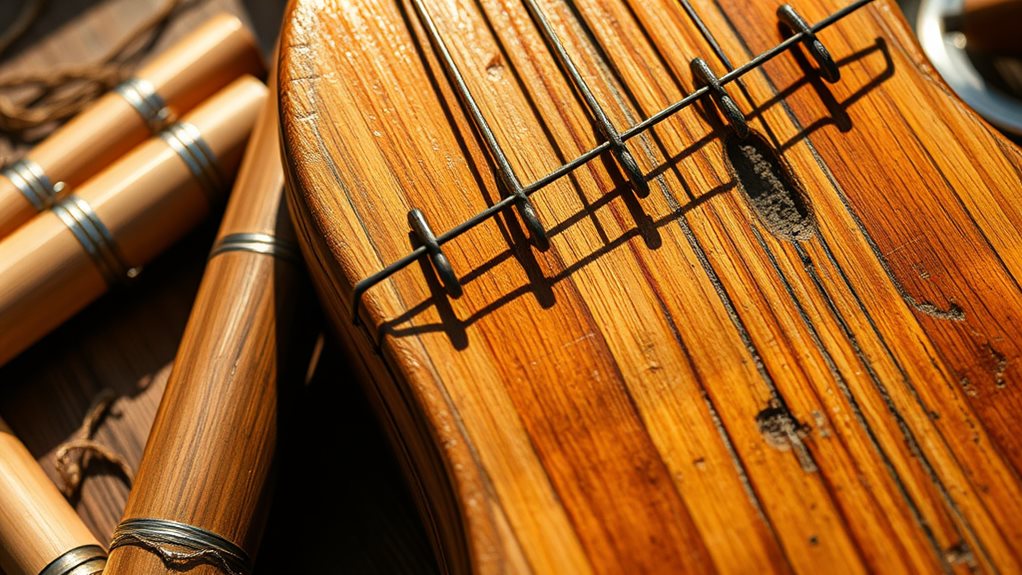
The Philippine traditional music scene features a diverse array of unique instruments, with the kutiyapi being one of the most distinctive.
The kutiyapi originates from the indigenous communities of Mindanao and the Visayas, dating back to ancient times. Its construction involves carving a single piece of wood, typically jackfruit, into a hollow body and long neck. The kutiyapi typically features two strings. Variations exist, but it often has frets made from beeswax or bamboo, and strings that were once animal gut are now frequently nylon or wire.
The kutiyapi holds immense cultural significance. It's a symbol of Filipino identity and artistic tradition, recognized for its importance by the NCCA. Understanding kutiyapi construction and cultural significance is crucial to appreciating the breadth and depth of the country's musical heritage.
Another notable instrument is the kubing, crafted from a single piece of bamboo with evenly spaced slits. The kubing is played by plucking the bamboo tongue, producing a unique twang. Its dimensions are typically around 8-12 inches. It's used in ensembles and accompanies folk songs, dances, and storytelling. For some, it holds spiritual significance.
These instruments, including the kutiyapi and kubing, demonstrate the ingenuity and artistry of Filipino craftsmanship. They transcend mere musicality, embodying cultural identity and connecting generations.
Music in Filipino Life
Music plays a vital role in Filipino life, deeply integrated into the country's cultural fabric. It's an essential part of daily life, from family gatherings to community festivals, and serves as a powerful force shaping social interactions, preserving cultural heritage, and expressing human emotions.
Traditional music in the Philippines is a continuous process, with new styles emerging while older ones are preserved. For example, the lively sounds of the Agung, bungkaka, and gambal are often heard during the Halabon festival, showcasing the country's rich musical heritage.
Filipino families often gather to play music at home, sharing stories and creating lasting memories. This practice not only strengthens family bonds but also helps preserve cultural traditions.
Traditional music also plays a significant role in significant ceremonies, enhancing their spiritual weight. For instance, the respectful silence during a traditional music performance at a ceremony highlights the importance of music in Filipino culture.
The Philippines is home to a diverse range of musical instruments and styles, reflecting the country's regional and cultural influences. The kulintang ensemble, for example, is a traditional instrument from the southern Philippines, showcasing the country's rich cultural diversity.
Music plays an active role in conflict resolution, community bonding, and the transmission of cultural knowledge across generations. Supporting local artisans and musicians is crucial in preserving the Filipino identity and cultural heritage.
The creation and performance of traditional music are closely linked to the country's unique history and identity. Modern innovations, such as using recycled materials, ensure that the tradition of music-making continues to evolve and thrive. This demonstrates a profound connection between creativity, sustainability, and national pride.
Handcrafted Musical Treasures
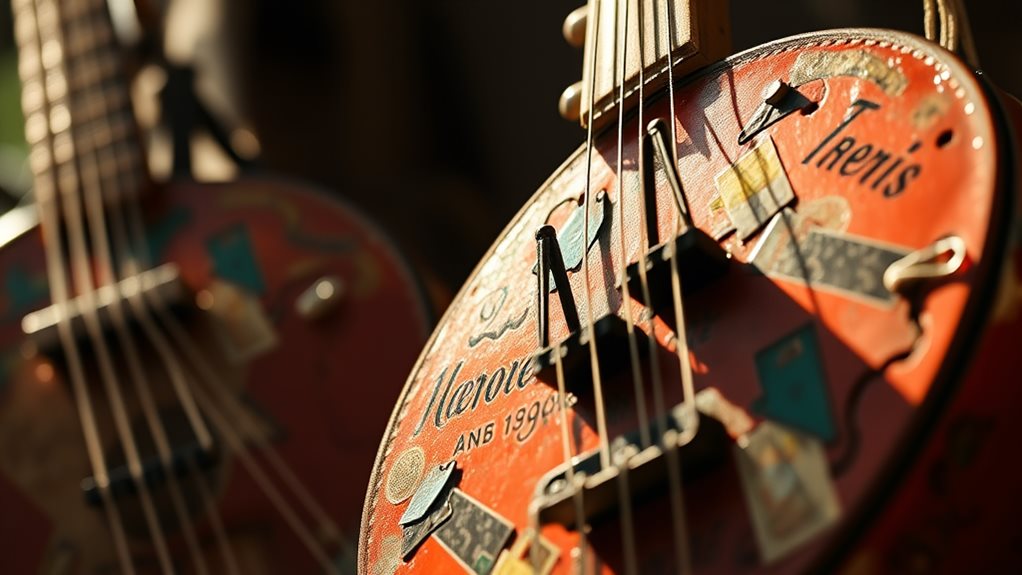
Filipino musical instruments showcase the country's rich cultural heritage and adaptability. The instruments often feature handcrafted techniques passed down through generations. For example, the Kubing, a bamboo jaw harp, and the Kutiyapi, a stringed instrument carved from a single piece of wood, demonstrate the skill and artistry of their creators.
The intricate designs on these instruments reflect the creators' dedication to their craft. Even instruments made from recycled materials, such as empty cans, rubber bands, and matchsticks, showcase resourcefulness and creativity. The Pas-ing, an instrument made from upcycled materials, is a testament to the power of innovation.
Traditional instruments like the Agung, a set of gongs crafted from bronze or brass, produce resonant tones due to meticulous craftsmanship. Similar attention to detail is evident in instruments made from natural materials like bamboo and wood.
For instance, the Sloli, a charming flute, and the Bungkaka, a percussion instrument, demonstrate the versatility of these materials and the ingenuity of Filipino artisans.
These handcrafted instruments aren't just functional objects, but also living testaments to a rich cultural legacy. They express Filipino identity through sound and artistry, showcasing a unique blend of tradition and innovation.
Noi Narciso and Recycled Art
Noi Narciso: Transforming Discarded Materials into Unique Musical Instruments****
Davao-based artist Noi Narciso transforms discarded materials into functional art, showcasing the power of recycling and creativity. His innovative approach combines nostalgic inspirations and creative reuse. Narciso is a 2021 and 2022 awardee of the National Commission for Culture and the Arts (NCCA) and has collaborated with Japanese artist groups.
Narciso's Approach to Art and Music
Narciso's work is a blend of nostalgia and creativity. He creates unique musical instruments from discarded materials, such as plastics, metals, and wood.
The body of a flute made from repurposed plastics, for example, showcases vibrant colors and functional art. Similarly, meticulously arranged metal scraps create a percussive ensemble with rhythmic clanging. Wood reclaimed from old furniture forms the heart of a soulful string instrument with warm resonance.
The Pandemic's Impact on Narciso's Work
The pandemic refined Narciso's technique and fueled his passion for creative reuse.
He transformed discarded items into functional art, promoting environmental responsibility**. His work isn't just about recycling; it's about healing, reflection, and the transformative power of art**.
Sharing His Vision
Narciso shares his message and showcases his craft through his YouTube channel and interactive exhibits.
His exhibits offer a unique opportunity to engage with his vision and appreciate the beauty found in discarded materials. By witnessing the beautiful melodies his creations produce, viewers can understand the beauty of creative reuse and the power of art.
Preserving Cultural Heritage
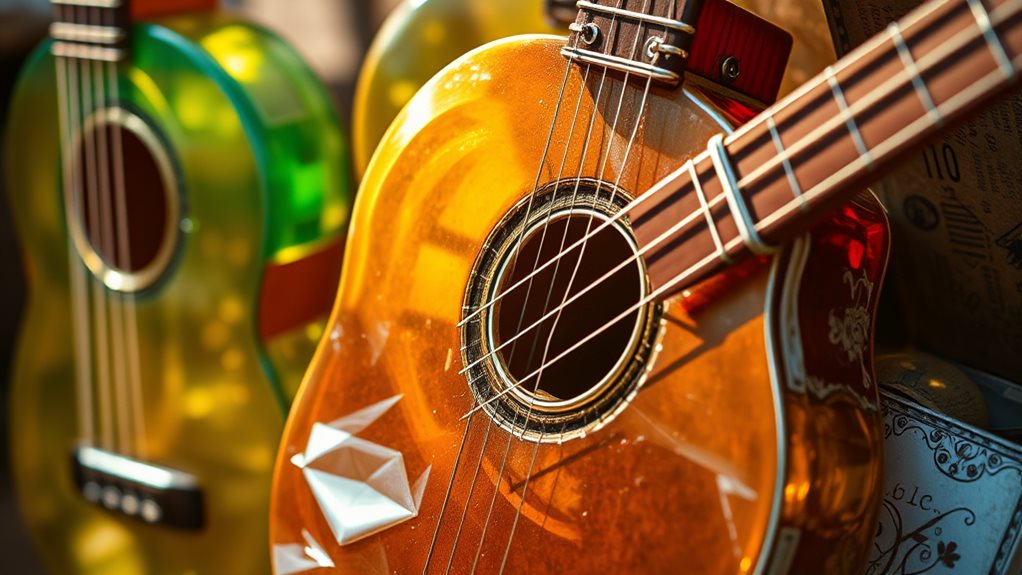
Preserving Traditional Filipino Musical Instrument Craftsmanship is Crucial for Cultural Heritage****
Traditional Filipino musical instruments, such as the Kutiyapi and Agung, are significant for maintaining cultural heritage. These instruments, crafted from locally sourced materials like bamboo, wood, and rattan, reflect the cultural identity of Filipino artisans and ensure cultural preservation.
The Role of Traditional Instruments in Filipino Culture
Instruments like the Kubing, Kutiyapi, and Agung play a vital role in traditional Filipino music.
They are integral to cultural festivities, rituals, and social gatherings, providing robust and resonant accompaniment. Their unique sounds evoke the country's cultural soul, fostering a strong sense of community.
Instruments in Social Functions
Instruments like the Kesal, Kumbing, and Sloli are played at weddings and during conflict resolution.
These instruments highlight music's social function, enhancing interactions. They're played in various settings, from festivals to private gatherings, seamlessly incorporating younger members into traditional music.
Heritage Transmission and Preservation
Cultural masters teach younger generations, sharing their knowledge with tourists and students alike.
The non-standardized measurements reflect individual craftsmanship, a key aspect of heritage transmission**. Ethnomusicologists document and study these instruments, ensuring their cultural significance** is preserved for future generations.
Sustainable Musical Innovation
Filipino Musical Innovation Embraces Sustainability
Filipino musical instrument makers incorporate recycled materials and sustainable practices into their craft, highlighting the nation's commitment to cultural preservation and environmental sustainability. This innovative approach not only promotes eco-awareness but also showcases unique designs and resourcefulness.
The transformation of waste into functional instruments** is a hallmark of Filipino musical innovation. For instance, a *Kubing* crafted from sustainably harvested bamboo produces a rich tone that reflects the maker's artistry and environmental responsibility. Similarly, the *Pas-ing* instrument, made from repurposed matchsticks and empty cans, demonstrates the power of upcycling** and resourcefulness.
Sustainable practices in instrument making involve using renewable resources like bamboo and reducing waste. This approach contributes to a circular economy by promoting the use of eco-friendly materials and minimizing environmental impact.
Local artisans are supported through the preservation of traditional techniques, combined with innovative designs.
Community engagement and education** play a vital role in promoting sustainable musical innovation. Workshops where participants learn to transform waste into musical creations help pass on sustainable practices to future generations. This approach fosters community engagement** through music and education, creating a legacy of sustainable artistry.
The economic benefits of sustainable instrument making extend to local communities, providing income opportunities while minimizing environmental impact.
This innovative approach to musical instrument making showcases Filipino ingenuity and cultural pride, highlighting the nation's commitment to environmental sustainability and cultural preservation.
Questions and Answers
Where Can I Buy These Instruments?
You can find sustainable music instruments from various sources. Local artisans often sell their handmade instruments at exhibits, where you can see and try out the instruments before making a purchase. Online marketplaces like Etsy and eBay are also great places to find unique, eco-friendly instruments. Additionally, local markets and cultural festivals often feature artisans selling sustainable instruments. Another way to find these instruments is through cultural organizations that support local artisans and sustainable practices.
Are Workshops Available for Instrument Making?
Yes, workshops are available for instrument making. These workshops come in the form of DIY classes and community programs. They often provide hands-on instruction in instrument creation, including the use of recycled materials. For example, some workshops focus on teaching traditional instrument-making techniques, such as woodworking and stringing. Others emphasize sustainable crafting methods, like repurposing old materials to create unique instruments.
How Much Do These Instruments Typically Cost?
Instrument prices range from affordable to expensive, depending on the materials used. The cost of an instrument can vary depending on the type and source of materials. Instruments made from recycled materials are generally cheaper due to lower material costs.
Prices can vary widely depending on the artisan and design. For example, a violin made by a skilled artisan using high-quality, sustainably-sourced wood may cost $5,000 to $10,000 or more, while a similar instrument made from recycled materials might cost $1,000 to $3,000.
What Sounds Do the Recycled Instruments Make?
Recycled instruments produce a wide variety of sounds. These sounds can be percussive, such as the thundering beat of a drum made from a metal oil barrel, or string-like, like the twang of a guitar constructed from a wooden crate and metal wires. Some instruments even generate flute-like tones, for example, the airy whistle of a flute crafted from a plastic pipe and wood.
Are There Online Resources for Learning More?
Yes, there are numerous online resources available for learning more about DIY instrument making. Online courses and educational videos can be found by searching for specific topics, such as crafting instruments from recycled materials. Many tutorials offer step-by-step instructions and demonstrations, making it easier to learn and understand the process.